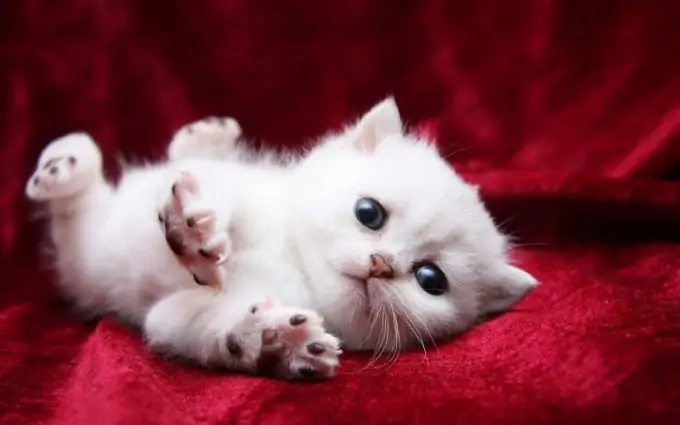Cats are extremely tenacious, they can independently recover from wounds, and also survive a fall from the 9th floor, while it was noticed: cats always land on their paws.

The amazing ability of cats to land on their paws from any jump is something that was given to them by nature - a protective reflex. When any feline, regardless of size, falls, he instantly aligns his body relative to the landing site. This quick reaction is due to the strong vestibular apparatus.
The secret of cats was helped to unravel the slow-motion photography of the Frenchman Étienne Jules Marey, a series of his photographs clearly showed how cats do their freaks.
Physiology
Scientists have found that a cat, when jumping with a turn, does everything according to the same pattern: first, it turns its head, and then its neck and body so that they are on the same straight line with its head.
Falling, the cat pulls its legs and tail to the body to accelerate the moment of flight, and as soon as the ground is close, immediately releases its paws for a safe landing. The paws extended forward on landing serve to cushion the impact from a fall. It is worth noting here the amazing flexibility of the spine, which precisely guides and aligns the animal's body. The secret lies in the large number of links: a cat has 30 of them, while a person has only 24.
At the same time, in all felines, the Achilles heel is the cervical vertebrae, which, as a rule, are not able to compensate for the impulse imparted during the fall, and the cat, landing, beats its head against the surface, breaking the muzzle.
Conservation of momentum
One of the explanations for landing on paws is the so-called law of conservation of momentum, which states that when falling, the cat rotates parts of the body in different directions, turning over into the desired position, while the moment of rotation remains unchanged. The cat's tail serves as a kind of steering wheel and helps with rotation. This ability to land is innate, and already from two months the kitten is able to control its body so that when landing from a jump it will always occupy a horizontal position.
True, when jumping from a great height or unexpected fall, not all cats have time to group correctly - hence the injuries. However, the good shock absorption capacity of the paws and the flexibility of the spine save the animal from death. The most common injury from such a fall is a pinched nerve and, as a result, immobilization of the hind limbs. Such lesions are almost never treated, and therefore veterinarians offer either special walkers or euthanasia of the animal.







